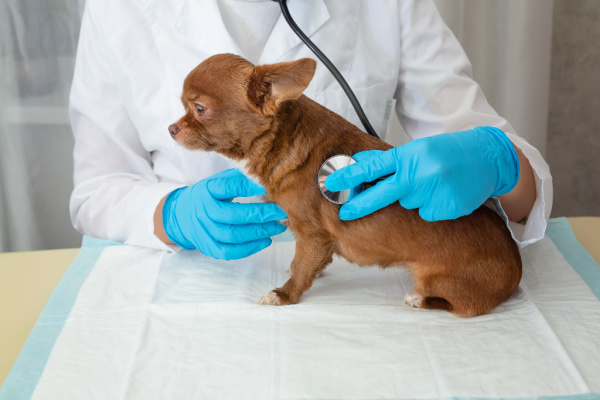April is Pet First Aid Awareness Month, and it’s the perfect time to brush up on your first aid skills for your furry best friends. When a pet is bleeding or seizing, there’s no time to waste—seeking immediate veterinary attention is priority number one. But many pet parents don’t realize that there are things they can do on the way to keep a pet comfortable and possibly minimize pain.
According to the American Animal Hospital Association (AAHA), 60% of all vet visits are emergencies, and statistics show that preventable accidents are the leading cause of death among pre-senior dogs and cats. In recognition of National Pet First Aid Awareness Month this April, I’d like to share the following advice for how to help your best friend if emergency strikes.
For Wounds
Swab the cut with Vaseline and trim any hair around it. Clean the wound with mild soap and warm water, then dry it with a clean cloth and cover with a non-stick pad. Bandage with gauze and vet wrap and call your veterinarian for advice on when to change dressings and how to monitor for signs of infection. For wounds that are bleeding profusely, apply direct pressure with a clean, sterile cloth and elevate the bleeding area above your pet’s heart (you can use a pillow to prop up a limb). Transport to medical care as quickly as possible.
For Stings/Insect Bites
Remove the stinger with tweezers or by scraping it with the edge of a credit card, then apply an ice pack to the site. Watch for any signs of an allergic reaction—hives and facial swelling are common. Some pets may go into anaphylactic shock; the most common symptoms are the sudden onset of diarrhea, vomiting, shock and seizures. If your pet is in shock, the animal’s gums will be very pale and the limbs will feel cold. If your pet shows any of these symptoms, seek immediate emergency care.
For Hyperthermia (heat stroke)
Move your pet to a shaded or air-conditioned area and turn on a fan to circulate cool air. Wet the pet’s ear flaps and apply wet cloths (lukewarm, not cold!) to your pet’s neck, belly and groin. Get to the vet as soon as possible—heat stroke is often deadly and any delay in treatment can worsen your pet’s prognosis.
For Hypothermia
Move to a warm area and cover the pet with warm water bottles, blankets or towels. If using a heating pad, put several layers between your pet and the pad to avoid burns, and always set electric heat sources to a low setting. Transport to medical care as soon as possible.
For Burns
For heat burns, apply cool water compresses with a clean, sterile cloth. Do not apply ice, butter or any other ointment unless directed by your veterinarian (who you should call right away). If the injury is the result of a chemical burn, brush away as much of the substance as possible, wash the contaminated area with large amounts of warm (not hot) flowing water and get your pet to the vet.
For Seizures
Seizing pets may twitch and shake, foam at the mouth and/or vomit. There’s no first aid tip to stop this, so try to remain calm and clear away anything that could injure your pet (like furniture). Try to track how long the seizure lasts, and keep your pet quiet once it’s ended. Call your vet as soon as your pet is calm.
Seek Veterinary Treatment As Soon As Possible
Although these tips can help in an emergency, remember that first aid is meant to be exactly that: a first measure—not a substitute for professional care. Sometimes even minor injuries can turn into something worse, so it is always best to err on the side of caution and seek veterinary treatment for your furry friend. Either way, having a little training in first aid can help YOU stay calm during pet health emergency, asses the most urgent need, and take the best action when your pet needs help.
—
Photo Credit: OLESYA BOLTENKOVA / Shutterstock.com
